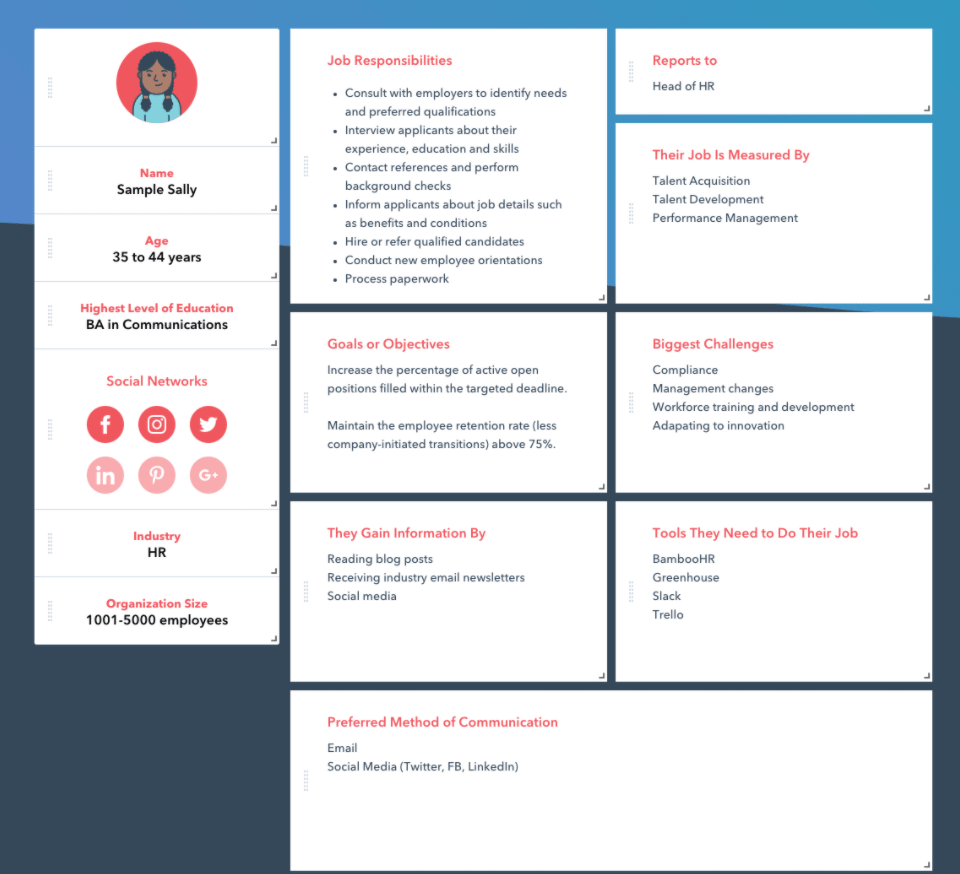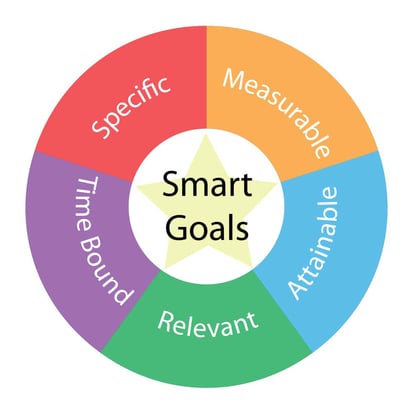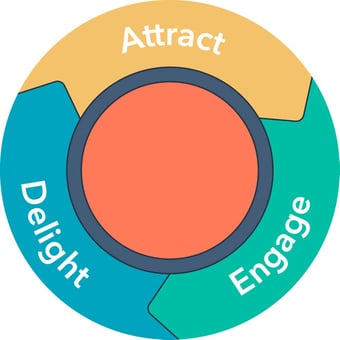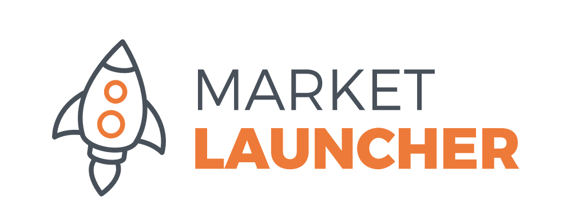SAAS Marketing: The Ultimate Guide
Table of Contents
SAAS Marketing: The Ultimate Inbound Marketing Strategy for Software Companies.
Discover how Inbound marketing can deliver more traffic, more conversions, and a higher chance of repeat custom.
Recognise a sophisticated marketing ideology that will have wide-ranging impacts on your business.
Learn how to build a framework to meet goals and address challenges at all buyer journey stages.
Inbound Marketing for SAAS Companies
Do you find yourself thinking these things?
- Not enough people are looking at our website!
- The wrong people are looking at our website!
- Visitors to our website aren’t converting!
- We want to close more deals!
If so, inbound marketing will help your SAAS marketing strategy and efforts.
Inbound marketing can deliver more traffic from relevant audiences, more conversions, a more streamlined customer experience, more sophisticated reporting, and a higher chance of repeat custom.
This guide will introduce the key concepts of inbound marketing, then run you through an eleven step inbound marketing strategy for delivering success to your organisation.
The goal of this guide is to help SAAS technology companies see success and a healthy ROI from their marketing efforts.
Our guide will cover the following:
- Inbound Marketing for SAAS Companies: What it is and how it works
- How to define your target audience
- Setting campaign goals and benchmarks
- Effective keyword research
- The role of topic clusters and pillar pages
- Creating a SAAS content strategy and editorial schedule
- Nurturing leads with offers and CTAs
- Marketing automation
- Creating high-quality content
- Using social media and digital PR to amplify content
- Giving your content an extra boost with paid media
- How to meaningfully track and report on results
Inbound Marketing for SAAS: What it is and how it works
A key concept of inbound marketing is to attract people to your site, rather than fighting for their attention through traditional online advertising channels. Instead of competing for advertising real-estate, you attract visitors to your site with high-quality, well-thought-through content.
Inbound marketing is not buying ads. It is not cold calling or any other form of interruptive marketing.
Wouldn’t it be better to create content that your audience will want to engage with, rather than interrupting the content they are engaging with already?
Wouldn't it be better to build credibility, and to gain the trust of prospects and customers?
These are the goals of inbound marketing. It is an approach designed to underpin wider business practices, creating a situation where visitors, leads, and customers have their needs met by your business, fostering trust, credibility and, ideally, repeat custom.
It is an approach that builds relationships instead of eroding trust with indiscriminate advertising.
It is a better way to help your customers at all stages of their interaction with your business.
Where did inbound marketing come from?
This approach is a response to a growing suspicion of the motives of brands, which has come about through the massive proliferation of intrusive advertising made possible by the internet.
Those adverts that follow you around every webpage you visit? They are annoying. The adverts on your phone that seem to know what you've been talking about in real life? They're just plain creepy.
If you've ever used AdBlock, unsubscribed from a marketing email, hung up on a cold caller, or wished you could remove your phone number permanently from the lists they seem to get hold of, you've experienced the frustrations that led to the rise of inbound.
Key stages of the inbound methodology
There are two key concepts and three key stages of inbound marketing. The concepts:
- Content: Create content your audience will find interesting or useful, and distribute via channels they use.
- Context: Gather intelligence about what your audience engage with, and use this to automate marketing processes that will move them further down the funnel.
The three stages are to attract, engage, and delight. They may sound simple but combined they represent a sophisticated marketing ideology that will have wide-ranging impacts for your business. Let’s take a look at each in a bit more detail:
Attract
There's more to marketing than increasing traffic: It's about bringing the right people to your site. Attracting strangers and turning them into visitors is the first step toward effective marketing.
The goal here is to attract people who will have a genuine interest in your business, and who have the potential to benefit from being your customer.
Ensuring your traffic is made up of your target audience lays the foundations for turning them into paying customers, so think about who you're targeting - and be specific. Then, create content to appeal to them and their specific needs.
Some criteria that will be useful in the attraction stage:
- Content strategy: Essential for providing clear direction when optimising your website for search engines, fuelling your social media activity and, of course, nurturing your prospective customers as they move along the buyer journey.
- Blogs: Vital for ranking for relevant keyword terms or phrases that are targeted at your visitors' interests and needs.
- Videos: To increase the range of formats available for visitors to engage with.
- On-site SEO: To maximise visibility and increase the size of your potential audience.
- Social media: To distribute your content amongst relevant audiences.
- Ads: To promote content and raise awareness amongst relevant audiences.
The attraction stage works by bringing the right people to your site and giving them the right content for their needs.
Engage
Until recently, steps two and three in HubSpot’s inbound marketing methodology were converted and close. These have been subsumed into the new engagement stage.
The goal of which is to create lasting relationships with prospective customers on their preferred channels.
By casting a wide net and having considered, well-researched presences on each, you set yourself up for most effectively engaging the visitors you attracted previously.
By engaging with prospective customers in the right place at the right time, you pave the way for them to convert later. This means they move from visitors to customers.
Some goals of the engagement stage:
- Convert your visitors into leads.
- Generate consistent leads, and increase the rate at which this is achieved.
- Keep visitors in your orbit, and encourage them to continue their buyer journey.
- Give leads everything they need to become paying customers.
There is a wide suite of tools that will help you with the engagement stage of your inbound marketing strategy:
- Landing pages: To give prospective customers resources that will move them along their buyer journey, in exchange for information that will help you improve customer intelligence.
- Calls to action (CTAs): To signpost visitors along the buyer journey, toward your desired marketing outcomes.
- Workflows: To expose prospective customers to curated content based on their needs.
- Lead management: To strengthen your understanding of each lead, and allow you to further refine marketing efforts.
- Chatbots: To maximise the amount of human resource available for meaningful tasks.
- Marketing automation: To automate repetitive and low-level tasks, and free up further human resource.
With this stage, you will turn your website into a lead-generating machine, and build a sophisticated understanding of your prospective customers.
This information gives b2b saas marketers everything they need to usher prospects along their buyer journey, toward conversion.
Delight
A completed transaction shouldn't be the end of your relationship with a customer.
The goal of this stage is to delight your customers and turn them into promoters, and to maximise the possibility of cross-selling, up-selling, referral business, and case studies.
Tools that will help you to delight customers and give them everything they need to evangelise about your SaaS business are as follows:
- Smart content: To personalise what returning visitors see when they come back to your website, and present different calls-to-actions accordingly.
- Surveys: Drive innovation while focussing on your strengths.
- Email marketing: To continue curating relevant content for customers.
- Conversations inbox: Continue conversations with customers, and ensure visibility between departments to maximise the likelihood of repeat custom.
- Attribution reporting: Assess results with closed-loop reporting - one reporting system instead of several. Simplify, and don't let anything slip through the cracks.
- Marketing automation: Continue to give customers what they need, when they need it.
By creating post-sales content that customers will want to share, based on their positive interactions with your brand, you turn existing customers into active mouthpieces for your business.
An inbound marketing walkthrough
Now that you understand the key concepts and stages of inbound marketing, you’re ready to chow down on the meaty part of this eBook.
Through this next section of ‘Inbound Marketing for Tech Companies’, we will teach you how to build and implement an integrated inbound marketing strategy.
We will look closely at how you can define your target audience, why it’s important for your company to set goals and benchmarks, the key ingredients to keyword research, plus much more.
When you finish your reading, you’ll be equipped with the knowledge and know everything you need to create a strategy that focuses on the effective interplay between departments and differing marketing conditions.
So what are you waiting for? Buckle up and let’s start.
Market Launcher
To make this section as useful as possible, we’ve used a fictional company called Market Launcher Software Ltd. They are a marketing platform targeted at the SME market, typically B2B or high-value B2C companies.
At each stage of the strategy, we will give examples specific to this company, to demonstrate how inbound marketing can help companies in the technology space.
How to define your target audience
Good traffic figures are only worth boasting about if they include your target audiences.
In this section we will talk about:
- Buyer personas: Fictional, generalised representations of segments of your customer base, designed to give you a better understanding of the needs and demographics of your customers (and prospective customers).
Having a clear understanding of your business target audience is vital, as it underpins all future marketing activity.
The goal of an inbound campaign is to attract your target audience and turn them into customers. Without a clear understanding of whom you are marketing to, you are effectively shouting into the dark.
Creating buyer personas
The strongest buyer personas are based on research and insights gathered from your existing customer base. Investing time into making them as detailed as possible has several benefits.
It is easier to tailor content to the specific needs, behaviours, and concerns of different user groups. You can use personas to segment future marketing efforts, especially email campaigns.
Personas can also be referred to in internal discussions, as an easy anchor for everyone to understand.
By giving your persona a name and an image, it becomes easier to visualise them as a real person. You can add further realism by including age, qualification level, their role within the organisation, and even the results they would expect to see and whom they would report to.
You are trying to build as accurate an image as possible, so you get an understanding of prospective customers’ needs, concerns, and the solutions offered by your product that they would find appealing.
Creating useful buyer personas is easy. Here's how to do it:
- Interview customers, prospects, referrals, and look to understand what they like or dislike about your offering.
- Look for behavioural trends. Understand how existing customers found you and where prospective customers look for you.
- Get the right information. Ensure forms capture the right information from prospective leads. If you qualify leads by their position in a company, include "Job Title" on forms, for example.
- Keep your sales team involved in the process. Understand their engagement with customers, and bake their insights into the persona creation process.
To make a buyer persona as effective as possible, try to collect as much (relevant!) information as you can:
- Who: background, demographic, identifiers.
- What: goals, challenges, what we can do to help. This allows you to understand and articulate their needs.
- Why: real quotes, common objections. This lends realism to a customer persona and can help them to feel more tangible.
- How: marketing message, the elevator pitch. The refined and targeted marketing efforts that will appeal to this persona.
You are not limited to one persona: Depending on your business and range of services, you may have several. You can go negative, too: An exclusionary persona is a representation of whom you don’t want as a customer.
Remember, they are best used as a guide: The real end-user you have in mind should always be human.
HubSpot has a great tool that can be used to create sophisticated personas.
Market Launcher
We’ve created a buyer persona for Market Launcher, known as Sample Sally.

As you can see, Sally’s persona is quite detailed. We have her job title, the type of organisation she works at, and even personal information. This is supplemented by goals and challenges she faces at work, and ways that HubSpot can help her to achieve these.
Setting campaign goals and benchmarks
Define expectations and starting points, rather than making sporadic, disconnected attempts at marketing.
In this section we will talk about:
- Goals: What you hope to achieve from your marketing efforts. These provide structure to your campaign and can be measured against later to determine success.
- Benchmarks: A snapshot of where you are now, so that progress and effectiveness of activities can be measured.
Goals and benchmarks provide structure to all of your marketing efforts.
They pave the way for understanding and evaluating what progress you have made, which, in turn, paves the way for refinement and improvement of ongoing marketing efforts.
Benchmarking effectively
Before starting your inbound marketing efforts, ask yourself these questions:
- What website traffic are you receiving today?
- How many leads are being generated?
- What pages of your website are the most popular and which are converting visitors into qualified leads?
- Which channels are providing your success - organic search results, email marketing, paid advertising, social media?
- How long is your average sales cycle?
- How many customers have you sourced through current marketing?
Where possible, provide and record tangible answers. You will be looking back on these figures later, so putting in the effort to reduce ambiguity will be helpful.
Without this information, it will be harder to gauge success later on.
Effective goal setting
Ideally, you want to set specific goals that you can report on meaningfully, with numbers attached so you can hold yourself accountable.

It's slightly cliche, but the SMART goal methodology is applicable here:
- Specific: Goals should be detailed and descriptive so that you know what you are working toward. “Get more customers” is not specific. “Grow our customer base by 20% over the coming year” is.
- Measurable: Goals should be attached to numbers or other tangible outcomes, otherwise tracking progress becomes too subjective.
- Attainable: Is your goal actually achievable? Setting goals that there is little to no likelihood of achieving is demoralising.
- Relevant: Does your goal align with your wider marketing objectives? If not, perhaps it is not worth including.
- Timely: Attaching time-based deadlines and requirements to goals prevents them from staying permanently on the back-burner.
Goal creation in HubSpot
Goals can be tracked directly through HubSpot’s hubs. This is great because it keeps everything in one place, rather than requiring integration between different systems.
Sales Hub starter and professional users can track their revenue.
Enterprise users have more options: Sales Hub Enterprise users can track calls logged, meetings booked, revenue and deals created; whereas Service Hub Enterprise users can track average ticket resolution time, average ticket response time, and tickets closed.
This information gives you an at-a-glance understanding of several key performance metrics.
Market Launcher
Some examples of goals that could underpin the inbound marketing strategy of Market Launcher.
- Increase visits to the Market Launcher website by 20%.
- Increase conversion rate from 3.1% to 5% for the next year.
- Achieve an average of 12 free-trial signups per week.
- Establish an email workflow to guide subscribers along the buyer journey, with the view of having a 15% open rate and a 6% click rate.
HubSpot defines the stages of their customer workflow as a subscriber, lead, marketing qualified lead, sales qualified lead, opportunity, customer, and evangelist.
Effective goals for Market Launcher could involve moving visitors or customers to different stages of the customer workflow.
Effective keyword research
Understand what your audience is searching for, and how to be visible for those terms. Balance writing for the human and for the machine.
In this section we will talk about:
- Short-tail keywords: One to three words and usually represent top-level searches. “Dresses” is an example of a short-tail keyword.
- Long-tail keywords: Terms of a few words long, which represent more granular searches. “Where to buy vintage dresses in Kent” is a long-tail keyword.
It’s a good idea to be familiar with all the keywords people use in your niche, both short and long tail.
Short-tail terms usually drive more traffic, but long-tail terms will drive more qualified traffic.
Effective keyword research involves an understanding of this trade-off.
Why keywords are useful
Getting keywords right is important, as it will underpin the entire swathes of your content creation efforts. The right keywords help content to not be generic.
Using the right keywords also sends semantic signals to search engines, increasing the likelihood of your content ranking in relevant searches.
When building a list of keywords, look internally first:
- Speak to your sales team and find out what prospective customers ask.
- Review feedback of your software or product, good and bad. Address common themes.
- Look at questions asked online about your software or product, and that of your competitors.
By keeping an eye out for keywords that articulate a challenge or issue users are facing, rather than only considering branded terms or highly competitive industry terms, you give yourself a bank of titles to use for content later on.
Building a list of keywords
There are tools for finding keywords. Google’s Keyword Planner is probably the most familiar: You plug in a few keyword ideas and Google gives you reams of similar terms, along with search volume, competitiveness, and various other metrics.
But without refinement, results can be quite generic and are based on analysis of millions of searches from all demographics. How about building a keyword list based specifically on the needs of the buyer personas you created earlier?
To do this, bring your personas to mind and ask yourself the following questions:
- What 5-10 topics would your buyer personas most likely find your business through?
- Within those topics, which terms do you think it is important to rank for?
- What are other people searching? You can look at related searches on Google, or at suggestions given by HubSpot’s Content Strategy tool (if you are a customer).
By filling these 5-10 topic buckets with long and short tail keywords based on customer preference, existing searches, and refinement by keyword tools, you now have a long list of relevant keywords with which to tailor your content.

Market Launcher
Keyword topics for Market Launcher would include things like marketing software, email marketing, lead management, marketing tools, B2B marketing, and so on.
Using related searches on Google, we discover the following long-tail keywords that may be suitable for developing Market Launcher’s keyword insights:
- Sales and marketing software.
- Best marketing software 2019.
- Free marketing software.
- All in one marketing software.
- How to do email marketing.
- Email marketing definition.
- Email marketing tutorials.
- Email marketing templates.
- Lead management system database design.
- Lead management system features.
- Digital marketing tools and techniques.
- Traditional marketing tools.
- Marketing tools for small businesses.
- B2B marketing examples.
- B2B marketing strategies.
- B2B marketing ideas.
In five minutes we have built a list of long-tail keywords that can be used to guide future content creation efforts.
The more time you invest in this step, the more detailed and comprehensive an idea of your niche you will have.
We will revisit these ideas later.
The role of topic clusters and pillar pages
A new way of thinking about content. You are building a framework to meet goals and address challenges at all buyer journey stages.
In this section we will talk about:
- Pillar pages: Long-form content pieces that outline broad topics. "Cooking meat", for example.
- Cluster content: Individual pieces of content linked to from pillar pages. They are shorter and dig deep into more specific areas. Say, "how to spatchcock a chicken". Or, "meat and wine pairings".
- Topic clusters: The resulting content structures created by pillar pages and cluster content.
Topic clusters represent a new way of thinking about content. By restructuring content around keywords we identified previously, your entire content ecosystem becomes more closely aligned with your wider marketing goals.
This paves the way for more effective content creation.
What makes topic clusters so special?
According to HubSpot, who pioneered the topic cluster concept, you need to be using them for three core reasons:
- To improve your site's architecture.
- To make it easier for people to discover related content.
- And ultimately, to boost your search engine visibility.
The way we search has changed. Nowadays we're comfortable searching with questions - "where to buy light bulbs?", "how to fix a blocked sink?".
Topic clusters respond to this change in search habits by providing both resource pages for top-level queries (pillar pages) and more in-depth content for granular queries (cluster content).
The resulting linking structure sends signals to Google that the pillar page is an authoritative resource on the topic, so it's good for SEO, and the navigational structure makes the topic easier to browse for human readers.
Key takeaway: While nothing in SEO is future-proof, the underlying assumptions of topic clusters suggest they’re a good choice for the next step in the evolution of content.
How to incorporate topic clusters into your strategy
Wondering how to tell which titles to use for pillar pages and which to use for cluster content? HubSpot has a sniff test for this:
- If you’re trying to get the page you’re working on to rank for a long-tail keyword, it’s not a pillar page.
- If the page you’re working on explores a very narrow topic in great depth, it’s not a pillar page.
- If the page you’re working on touches on many aspects of a broad topic, it’s probably a pillar page.
The content on your website should cover the whole spectrum of buyer journey stages, with individual pieces targeting different stages. This means that existing content is eligible for topic clusters, as well as newly created content.
Here are the steps for incorporating existing content into your inbound marketing strategy:
- Read through all existing content.
- Group content thematically.
- Label each thematic grouping that arises: These are your pillars.
- Build pillar pages for each grouping.
- Create cluster content and link to it from the relevant pillar page.
Market Launcher
In the previous step we outlined a few broad keyword topics for Market Launcher. These were:
- Marketing software.
- Email marketing.
- Lead management.
- Marketing tools.
- B2B marketing.
Using HubSpot’s sniff test - mentioned earlier - each of these topics lends itself quite well to a pillar page. The long-tail keyword phrases we found around these topics are a great starting point for cluster content, too.
To recap, here are some of those terms, along with potential questions the content could address:
- Best marketing software 2019: Showcase the best options on the market today.
- How to do email marketing: A primer for the basic concepts of email marketing.
- Email marketing templates: A bank of downloadable resources that people can use.
- Digital marketing tools and techniques: An introduction to digital marketing and an overview of some of the most common tools.
- Traditional marketing tools: A comparison between traditional and modern marketing methods, results, and processes.
- B2B marketing strategies: A guide to B2B marketing for tech companies.
Creating a content strategy and editorial schedule
Content without a strategy to guide it is adrift. By fostering a content culture within your organisation, its creation can be baked into all internal processes.
In this section we will talk about:
- Content formats: The way through which content is presented. Gone are the days where text-based blog articles are the only option!
- Editorial schedules: A formalised publication calendar to ensure your content is planned and consistent.
High-quality content solves problems and provides value. When content is guided by keyword research and grouped into logical topic clusters, your users will find it a pleasure to engage with.
An effective content strategy gives you a bank of content to underpin future lead-generation and lead-nurturing efforts.
Fostering a content culture
Think about all the expertise you have within your company, and all the questions this could solve for people.
Creating content should be at the forefront of people’s minds, and resources (human and financial) should be allocated accordingly. It should not be an afterthought or a reluctant expense.
All content should be:
- Valuable to your TARGET audience. People don't give out their contact information without expecting something of value in return. Your offer will be valuable if it addresses some of the challenges you identified in your buyer persona (remember Sample Sally!)
- Aligned with your products or services. Great marketing often compliments the products or services, a business sells.
- Timely: Aimed at the right buyer at the right time. Taking into account your buyer's position in the sales process is important in what content you offer them.
How to provide value
Earlier we spoke about auditing existing content to reveal logical topic clusters for your organisation. You can turn the insights from your audit into a content roadmap, with all ongoing content created with the identified and established topic clusters in mind.
This will ensure simple navigation for human users and a clearly communicated site structure for search engines.
Referring back to the needs and concerns of your buyer personas will help you provide value, as will addressing queries represented by long-tail search queries.
Looking at existing content will also allow you to highlight gaps in your current content offering. Here are questions to ask yourself, and potential insights:
- Are there any ambiguous titles or propositions? Tighten them up, make them more action-oriented.
- Does any content target two or more stages? Break this up into separate content pieces.
- Are there any stages with not enough content? Add this to your ongoing content creation plan.
- Are any buyer personas not represented? Add content for their consumption to your ongoing content creation plan.
- Are any content pieces not clearly targeted toward a buyer persona? Refine the content with a specific buyer persona in mind.
- Is all content text-based blog posts? Reformat some content pieces: consider whitepapers, downloadable PDFs, podcasts, videos.
HubSpot offers a range of editorial schedule templates, which are great for businesses looking to improve their content marketing strategies. They give you everything you need to have a well-planned and effective calendar of content.
Which content formats to use
So far we have mentioned text-based content, but there are many other formats you can use. Each is angled toward slightly different user preferences and lends itself to addressing certain issues. Consider the list:
- eBooks
- Case studies
- Webinars
- How-to articles
- FAQs
- Newsjack pieces
- Data
- Statistics
- Aggregated content
- Listicles
- Videos
- Slideshows
- Audio
- Infographics
An effective SaaS content strategy contains a mixture of content formats, based on the goals they help to achieve.
It is important to consider each piece of content, rather than creating an infographic “because your competitor did one”, or writing how-to articles on obvious concepts for the sake of having some.
Market Launcher
Earlier we discussed potential pillar pages and cluster content that Market Launcher could publish on their site. This was underpinned by keyword research and represented questions their customer base would be asking.
But what other content formats could Market Launcher benefit from? Here are a few suggestions:
- An online archive of all public-facing slideshows: This prevents resources that took time and effort to create from gathering digital dust.
- Infographics outlining key digital marketing concepts: “How to do email marketing”, for example.
- FAQs: A section of the website with answers to common questions like “what is the difference between B2B and B2C marketing”. Each answer could be in text and video format to increase the means of engagement.
- Data: Occasional white papers could be published collating data from the industry.
Nurturing leads with offers and CTAs
Guide the visitors who have been enticed to your site toward desired marketing outcomes.
In this section we will talk about:
- Offers: High-quality targeted content that visitors can access in exchange for contact information.
- Landing pages: Specially designed website pages that are designed to move customers along the buyer journey with focussed and clear CTAs.
- Calls to action (CTAs) are page elements designed to capture the attention of a user and encourage them to complete the desired action. An effective CTA has an eye-catching design, compelling copy, and a clear value proposition.
By using offers, landing pages, and CTAs you usher visitors along their buyer journey. The bank of informed content planned in previous steps provides the incentives for visitors to give you information, which is used later for automated marketing.
Offers: What they are and how to use them
An offer provides your target audience with content that leads them to your website and allows them to gain useful insight from your expertise. They are then encouraged to provide you with contact details and other information.
A good offer should demonstrate real value for them as an individual, and for their wider business goals. This can be achieved by tying offers into needs and goals established in your customer personas.
Offers can come in many formats. The relevant format should be chosen according to each prospect's position in your funnel:
- eBooks
- Guides
- Webinars
- Slideshows
- Kits
- Case Studies
- New Research
- Templates
- Free Tools
- Free Trials
- Product Demos
- Consultations
- Coupons
- Whitepapers
- Assessments
Remember what we discussed before: Content created for offers should be valuable, aligned, and timely.
Gated versus ungated
A gated landing page gives access to information or a resource in exchange for data. A visitor may provide their email address in exchange for an eBook, or their name, job title, and phone number in exchange for a trial version of some software.
There is an implied understanding that the visitor will be contacted later in some marketing capacity.
Ungated pages provide as much useful knowledge as possible to prospective leads 'for free', in the hope that their engagement with the site and brand will lead to the potential for becoming a lead (and ideally converting) elsewhere and later on.
Pillar pages - discussed in an earlier section - are good examples of ungated content.
Creating landing pages that work
The purpose of a landing page is simple: To capture a user’s attention and persuade them to complete the desired action.
Their use allows you to collect specific information, and to analyse the impact of everything you promote.
As opposed to other web pages that can provide broad information, landing pages are designed to be highly tailored to a specific outcome, often containing just one CTA.
The landing page content is deliberately designed to maximise this chance of conversion by offering an incentive to convert, and a clear navigational journey through the page. You can think of landing pages as buckets that appeal to users engaging with your content through different channels.
Depending on the channel a user arrives from, they will be shown different offers:
- Traffic from a link in an email could lead to a landing page designed to prompt a purchase or establish wherein the lead nurturing stage the person is, and prompt further automatic email notifications.
- Traffic from a blog post or sidebar link could go to a landing page that may encourage an opt-in to a newsletter or email list.
- Traffic sent from a PPC campaign could go to a different landing page for each inbound keyword.
Here are some tips for creating effective landing pages:
- Use a clear value proposition that articulates what you’ll get when you click (“your e-book”), rather than relying on an ambiguous copy like “submit” or “click here”.
- Use clear and eye-catching headlines: They should be clearly visible and directly related to your advertising campaign or offer.
- Include a clear call-to-action: An easy-to-spot button, above the fold, in bold, contrasting colours so it stands out against other content.
- Keep the layout simple and free of clutter: Avoid anything that detracts from your offer.
- Ask for as little information as possible: Don’t overwhelm visitors by asking for their entire life story.
- Lead with benefits: Explain why people should click, straight away.
- Include social proof (star ratings, testimonials etc) to build trust.
HubSpot’s Landing Page Tool has a suite of options to get your landing pages up and running quickly and easily, in line with all the concepts mentioned above.
Market Launcher
We’ve previously discussed some content that Market Launcher could create, based on keyword research and representing a range of formats to maximise engagement.
By making select pieces of content gated, Market Launcher can gather more information about prospective customers, which can then be used for more specific content targeting later.
Perhaps their eBook outlining the key concepts of B2B marketing for tech companies could be offered to visitors in exchange for their name, job title, and the size of their organisation.
This allows Market Launcher to begin creating segments in their customer base, which lend themselves well to different types of content in the future.
Marketing automation
Automating some marketing activities frees up human resource, allowing your staff to prioritise tasks and focus on the most productive ones.
In this section we will talk about:
- Marketing automation: The act of building processes which do not require human initiation or intervention.
- Email workflows: Chains of email events and actions triggered by defined starting conditions.
- Chatbots: “A computer program or an artificial intelligence which conducts a conversation via auditory or textual methods”, according to Amazon’s Alexa.
- Lead nurturing: The act of moving prospects along the sales cycle, preparing them to buy by providing the information they need to feel ready to do so.
This is a way to streamline your marketing efforts by taking repetitive tasks out of human hands.
High-quality content is delivered to customers at various stages of their buyer journey, with precision targeting made possible by a collection of personal information captured via landing pages.
This provision of valuable content to customers paves the way for more conversion.
Why do leads need to be nurtured?
According to HubSpot, only 25% of your leads are ready to buy. Lead nurturing via workflows lets you keep the attention of the other 75% and encourage them to become customers.
Tracking your leads as they interact with your business allows you to build a better picture of their needs and preferences. By understanding leads’ behaviour and incorporating the insights into ongoing marketing efforts, you increase the likelihood of conversion.
This goes beyond looking at which pages are visited: You can see where they clicked, what they downloaded, and whether they engaged with offers as intended.
By satisfying user needs and “delighting their experience”, the goal with personalisation is to move people further along the buyer journey. Initially piquing and incubating their interest, then convincing them to commit to a purchase or subscription.
How to build successful workflows
Workflows deliver carefully crafted, personalised emails that address specific customer needs and desires. They should be contextual, focused, and measurable.
Marketing automation nurtures leads by taking “thank you” messages one step further. A preset sequence of responses - including emails, PDFs, downloads, and attachments - is triggered and curated based on actions taken by contacts.
By curating the content people receive and optimising their journey, you maximise the likelihood of them converting.
When a lead triggers an event they can be automatically enrolled in a workflow that will drip-feed them content and CTAs over a predetermined time frame.
Some of the types of email that may be included in a workflow:
- Educational emails: Responding specifically to customer pain points and suggesting a solution your business can offer.
- Safety net emails: To catch leads that have started to slip through the net. By re-engaging their interest you can catch them before you lose them forever.
- Personal emails: These emails are bespoke, and the personal touch can go a long way in closing a deal by making the prospective customer feel noticed and valued.
Branching logic - the kind you see in flow charts - can be used to create variations in the workflow when certain criteria are met, to ensure contacts are exposed only to relevant prompts and information.
Contacts can be enrolled manually into workflows, individually or via lists. They can also enrol themselves by doing things like signing up for a newsletter, clicking an opt-in button, and similar.
Events that can be used to trigger workflows:
- Send internal prompts for non-automated actions.
- Assign properties to contact to build intelligence.
- Set custom properties for contacts based on their actions.
- Set delays to stagger workflow deployment: Don't bombard people!
- Send personalised emails to contacts: People like to feel special.
Triggers and starting conditions:
- Entry to a workflow by engaging with a CTA.
- Manual entry into a workflow based on the property.
- The date: Birthdays, special offers, etc.
- Proximity to events.
- Proximity to expirations: Reminders of trial expiry dates.
Automating customer interactions with chatbots
Browsers, toolbars, and search engines were each designed to reduce the amount of technical knowledge required to get online. Consider chatbots the next step in this evolution.
When used, chatbots should provide a natural, conversational, and engaging experience. The information they provide should be quicker to access than a Google search. They should be designed to serve a specific purpose on your website, rather than included because your competitors have one.
The overarching goal of a chatbot - as with other automation efforts - is to free up human resources.
If support queries and common questions can be intercepted and resolved without the need of a human agent, your business becomes more efficient.
Here are some common uses for chatbots:
- Point users to answers for low-level queries.
- Scale-up operations by making it possible to deal with exponentially more queries than before.
- Qualify leads and creates tickets.
- Reduce response time.
- Increase engagement.
- Automate distribution of marketing material.
- Centralise information about each lead.
- Book meetings.
- Timesheet management.
The HubSpot Chatbot Builder gives you the power to create one or more chatbots for your website.
By building one from scratch you have full control over its language, and where it guides visitors to your site. Investing the time in creating a well-researched chatbot could save hours of human resource later down the line.
Market Launcher
How could a chatbot help Market Launcher? Perhaps having one on the site that asks visitors what they’re looking for could direct people more quickly to the most relevant products and services for their needs.
If the chatbot were to lead visitors to landing pages where content can be downloaded in exchange for personal information, these visitors would then become enrolled in relevant workflows.
Creating high-quality content
Build a bank of irresistible content that encourages engagement and sharing.
In this section, we will talk about concepts that don’t need definitions: Writing, titles, and proofreading. As we’ve said, high-quality content underpins your entire inbound marketing strategy.
By this point, we have a logical structure to create content within, a bank of keyword research to inform relevant and valuable titles, and enough information about each contact to deliver them the content they need when they need it.
This step paves the way for success, which will be boosted by content amplification efforts.
Don’t force it
"Content is King" is a phrase that made the rounds a few years ago, and as a result, the floodgates opened. Suddenly every business had a blog, and the majority were filled with content that was completely uninteresting.
The phrase is missing a few words: Good, well-written content that serves a purpose and provides value, is King.
High-quality really is the operative word: If people arrive at your site and find low-quality, poorly presented content, they will leave straight away.
When writing content, don't fire and forget. You can (and should!) edit content after it is published to bring it up to date. The eBook you're reading now is a complete overhaul of a previous version.
What to write about
It’s often the case that content writers within an organisation can’t see the wood for the trees. You’re so embedded in your industry that everything seems obvious or uninteresting, but this is rarely the case.
Think about how much-combined knowledge your company represents. Each member of staff has their own interests, their own background, and their own voice.
Pooling all of this into your content - especially when it is content informed by keyword research and framed by a logical strategy - means you’re onto a winner.
Here are some things to write about:
- Share insights from daily company activities.
- Share nuggets of company knowledge.
- Showcase work and results you are helping clients achieve.
- Demonstrate how your product or service helps businesses grow.
- Address pain points identified in customer personas.
- Show what it's like to work at your organisation (show that you're human!)
- Establish yourself as an industry voice by providing commentary rather than just reposting.
And here are some words to provide inspiration for content function at different stages of the buyer journey for software companies:
- The awareness stage: troubleshoot, resolve, upgrade, optimise, issue, risks, improve, prevent.
- The consideration stage: solution, service, tool, software, provider, supplier, device, appliance.
- The decision stage: compare, versus, pros and cons, benefits.
How to find good titles
The good news is, you’ve already done the hard work for this step (if you’ve built customer personas and done your keyword research!)
As we’ve seen previously, short-tail keywords make good pillar pages, and long-tail keywords make good cluster content. Combining these insights with the needs of your audience (encapsulated by buyer personas) should give you everything you need to generate a list of content titles.
If you’re stuck for ideas, here are some other ways to determine what to write about:
- What are other industry voices writing about? This could be competitors, commentators, or thought-leaders
- Look what people are searching for: If you type the first part of a query into Google, it will auto-suggest similar searches.
- What questions are your customers asking directly?
- Which issues do prospective customers have that your product can help to resolve?
You can also take a step back and think about wider campaign goals:
- If a campaign goal was to reduce support queries, how-to content pieces or FAQ type content may be suitable.
- If you are looking to sign up new users, comparisons with competing software might be better or perhaps feature spotlights.
How to write your content
At the start of each piece, create an outline. This is the scaffold your content will hang from. If you can summarise your entire post in a few bullet points, writing the content around them will be easy.
Write your blog using second-person language like "you" to make readers feel invested. Use accessible language; if you must use jargon, give clear definitions.
Outsourcing? If you are outsourcing the creation of content, ensure your briefing process is rigorous enough to communicate this nuance. Sending a list of titles may not always be enough to guide team members or freelancers to create the content you had in mind.
Have it proofread!
Spelling mistakes and grammatical errors can reduce the appeal of the content. If a reader has to struggle through poorly crafted sentences, they are more likely to bail.
Things to look out for:
- Correct spelling throughout.
- Logical flow: Read it aloud and make sure it flows all the way through.
- Plenty of paragraphs. This is digital content, not a book. People are put off by walls of text.
- Sourced: Link to source where relevant to lend your content credibility.
- Cross-reference with your style guidelines (if you have them) or your previously published content (if you don't).
- Cross-reference with the brief! This step is easily missed: make sure the content actually answers the points provided in the brief before publishing.
To spread the load more evenly across your company, consider a content schedule where each team member is expected to contribute occasionally
HubSpot's Content Strategy tool bolsters content creating by giving suggestions based on relevance, competitiveness, and search popularity in real-time as you type.
Market Launcher
Earlier we created a list of example topics for Market Launcher cluster content, based on keyword research. Here is the list, rewritten to have eye-catching titles for publication on the company website:
- The Ten Best Marketing Software Solutions for Tech Businesses in 2019.
- How to Turbo-Charge your Email Marketing Efforts.
- Six Email Marketing Templates that your Customers Will Love.
- The Best Digital Marketing Tools and Techniques for Tech.
- The Old and the New: Traditional Versus Modern Marketing Techniques.
- How to Maximise the Success of your B2B Marketing.
It’s about creating titles that are eye-catching and compelling, then creating engaging content that is a pleasure to read.
Using social media and digital PR to amplify content
Shout about your content through digital megaphones to get it in front of the right audiences.
In this section we will talk about:
- Social media: Virtual communities where content is shared and curated, and through which users can engage with individuals and organisations.
- Digital PR: An online marketing strategy designed to maximise an organisation’s online presence.
Amplifying content puts it in front of audiences containing your target customers. Thanks to the research undertaken and customer intelligence gathered, promoting content should equate to an influx of relevant traffic.
Getting the most from social
Social is a big umbrella. Networks fall in and out of favour, and content promotion strategies change along with user expectations and preferences. And there is nothing worse than a brand misjudging their social media presence.
Being present on relevant social media channels allows you to engage with prospects in different locations online. Being strategic about your social media content, rather than just tweeting or posting random things when you remember, allows for effective alignment of social media and your wider business objectives.
“Social Media can provide a conversational extension to a B2B company’s nurturing programs. Social Media gives us the opportunity to humanize our communications and make our companies more approachable.” - Ardath Albee, CEO of marketinginteractions.com
There is no “right” way to do social. Some of the most successful brand social media presences are completely unexpected and flout all convention: Wendy’s, the fast-food chain whose Twitter account is full of sass and banter, is a prime example.
This considered, we’ll give a series of pointers instead:
- Think about what your audience wants from their social media experience. People on Facebook are jaded with advertorial and promotional content unless it very specifically addresses one of their concerns.
- Think carefully about whom you are targeting. You can go very granular with Facebook, presenting some interesting opportunities for laser-targeted ads
- Think about which social media best reflects your target audience. On LinkedIn, you can go granular, but with a very different type of audience to Facebook.
- Consider using retargeting: We have all seen adverts online that remind us of products or services we have shown interest in recently - using this type of ad keeps you in front of customers for longer.
- Track everything! Integrate tracking pixels into your website to monitor performance.
- Respond courteously: Even the most indignant customer must be treated with courtesy, as no one likes to see a brand flying off the handle.
Streamlining your social media experience
Maintaining an active presence on multiple social media accounts traditionally required logging into each platform individually, checking responses, replying accordingly, and posting content directly. Each login must be kept up to date and save, as well.
This is, obviously, an enormous waste of time.
The HubSpot CRM offers social media integration, meaning you can schedule content for all platforms, and check notifications on all platforms, from one centralised location. This saves time and streamlines social media activity, by giving you the power to publish and monitor everything in one place.
Market Launcher
As a company in the B2B tech space, Market Launcher would benefit more from a presence on LinkedIn than a presence on Pinterest.
By looking at the demographics of different social media platforms, you can decide which are most relevant, and which are most likely to drive engagement.
Type of content will vary, too. Publishing data-based whitepapers on LinkedIn is much more likely to drive relevant traffic than on Twitter, for example, because the audience of the latter is less receptive to long-form content.
Giving your content an extra boost with paid media
Technically this isn’t inbound, but paying for an extra boost can set your content flying.
In this section we will talk about:
- PPC: Pay Per Click advertising, where you bid for visibility for specific searches.
- Paid social media: Advertorial content within social media platforms.
- Remarketing: Adverts that follow prospective customers to other websites, to keep your product at the front of their minds.
High-quality content deserves to be seen, and combining inbound and paid methodologies maximises its potential reach.
Why pay?
Paying for coverage contradicts the inbound philosophy of marketing with a magnet instead of a hammer, but select bits of paid promotion can give the boost your campaign needs to generate short term results whilst your organic authority grows.
It is worth noting that with Google Ads and other paid media when you stop paying, your visibility stops. You are investing nothing into ongoing visibility, whereas with organic inbound efforts, the results remain even after the active marketing efforts stop.
In other words, paid media should supplement inbound efforts, rather than replacing them.
By investing in some well-targeted PPC or paid social media you can give your content a boost, and increase visibility beyond usual parameters.
Market Launcher
Giving a boost to an industry whitepaper with paid advertising could put it in front of relevant audiences on LinkedIn, some of whom may engage and become aware of Market Launcher.
Having PPC running in the background to guarantee visibility in searches with purchase intent could be useful for Market Launcher, too. If they appear in the paid ads for searches like “digital marketing”, “B2B marketing”, “email marketing” and so on, they will see a trickle of relevant traffic.
To determine whether this is an effective investment, cost-per-lead will need to be monitored.
How to meaningfully track and report on results
Make sure all your hard work wasn’t for nothing!
This is where we evaluate everything that we’ve done so far. By learning what went well and what could be improved, we can make refinements to maximise the performance of ongoing inbound marketing.
Goals, benchmarks, and progress
At the beginning of this strategy, we recommended taking accurate benchmarks of your current position, so that the effectiveness of your goals and overall progress could be determined.
The value of a marketing strategy is determined by results. Even the most carefully-planned strategy can fall flat if it doesn’t do what it was designed to do: Read, bring visitors to your site and encourage them to become customers.
It is important, to be honest at this stage, and to be accepting of shortfalls.
By looking at how your strategy performed, you put yourself in a position to be able to refine and improve ongoing strategies.
If things didn’t go as well as expected, don’t despair. Instead, take a look at where people dropped off during their customer journey, and look to amend those areas.
If things did go well, don’t just pat yourself on the back. Look at what worked well, and see whether there are lessons you can carry forward to strengthen other parts of your future inbound marketing.
HubSpot’s CRM has integrated reporting software that collates performance metrics from all connected marketing channels. As we’ve seen, this can include landing pages, emails, social media platforms, and more.
If you set campaign goals in HubSpot, you will have a huge bank of data and numbers to look at.
Market Launcher
We set the following goals for Market Launcher earlier in the guide:
- Increase visits to the Market Launcher website by 20%.
- Increase conversion rate from 3.1% to 5% for the next year.
- Achieve an average of 12 free-trial signups per week.
- Establish an email workflow to guide subscribers along the buyer journey, with the view of having a 15% open rate and a 6% click rate.
Let’s say they only managed 10 free-trial signups per week. This would suggest that visitors are not as targeted as they could be, or that CTAs on free-trial landing pages are not optimised. Market Launcher would benefit from implementing the following actions:
- Improve visibility of CTAs on free-trial landing pages.
- Use A/B testing to determine which landing page design is most effective.
And there you have it
We hope you’ve found this information valuable and informative, and that you now have the knowledge you need to build and implement an effective inbound marketing strategy for your business.
Gone are the days of feeling frustrated that your site isn’t working as effectively as it should: Now you can refine your inbound marketing based on real, actionable insights, and improve the results on an ongoing basis.
Your customers will be empowered and will have their needs met at every stage of their journey, and they will be so delighted with their interactions with your business that they will take it upon themselves to spread the word on your behalf.
If you have any questions about inbound marketing, or you’re interested in working with an inbound marketing agency to maximise your success, get in touch.
“Armed with the knowledge, you’re ready to embark on your inbound journey. But we never said you had to do it alone! Experts in our field, why not bring us along for the ride and let us help you grow your tech company through inbound marketing. It’s the partnership you never knew you needed” - Simon Leeming, Co-founder of Digital Media Stream











